Photographed in the Savuti Channel area, Okavango Delta, Botswana. A pack of African Wild Dogs was rearing a litter of 13 pups which we observed playing near the entrance to their den. The den typically will be the abandoned burrow of another animal which the pack will take over. Only the alpha male and female breed with the other adults in the pack being submissive to the breeding pair. At the time of our photographing these pups, most of the adults were away hunting whilst one adult remained behind to keep watch over the young. This behaviour is characteristic of the species, the pack having a complex, cooperative social structure.
Photographing the pups was difficult as the burrow was partly obscured from view by scrub. I used the 500mm lens with the 1.4x converter for most of the shots, even then, some images required cropping.
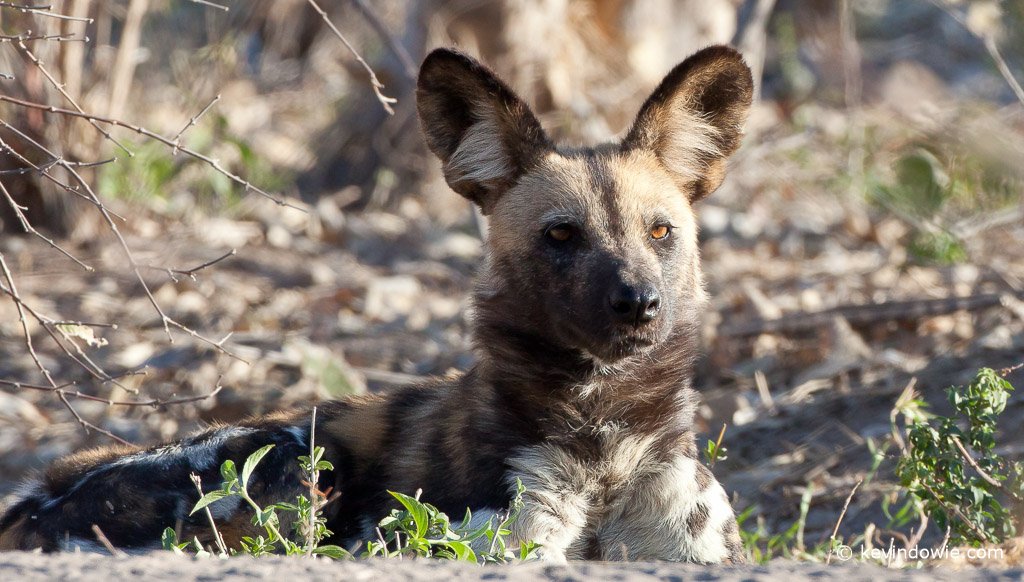
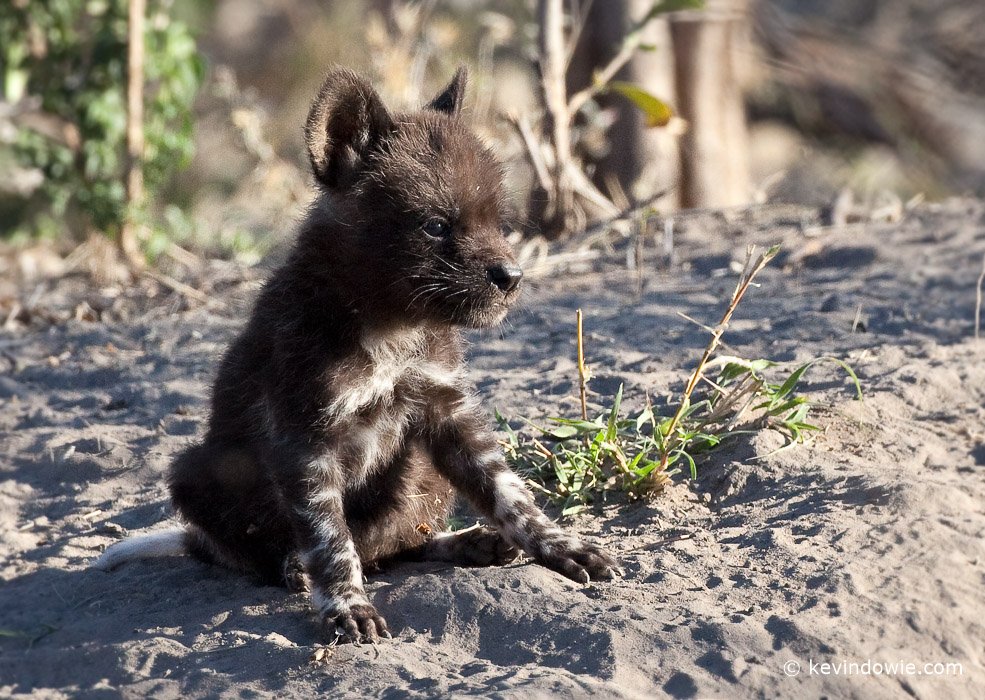
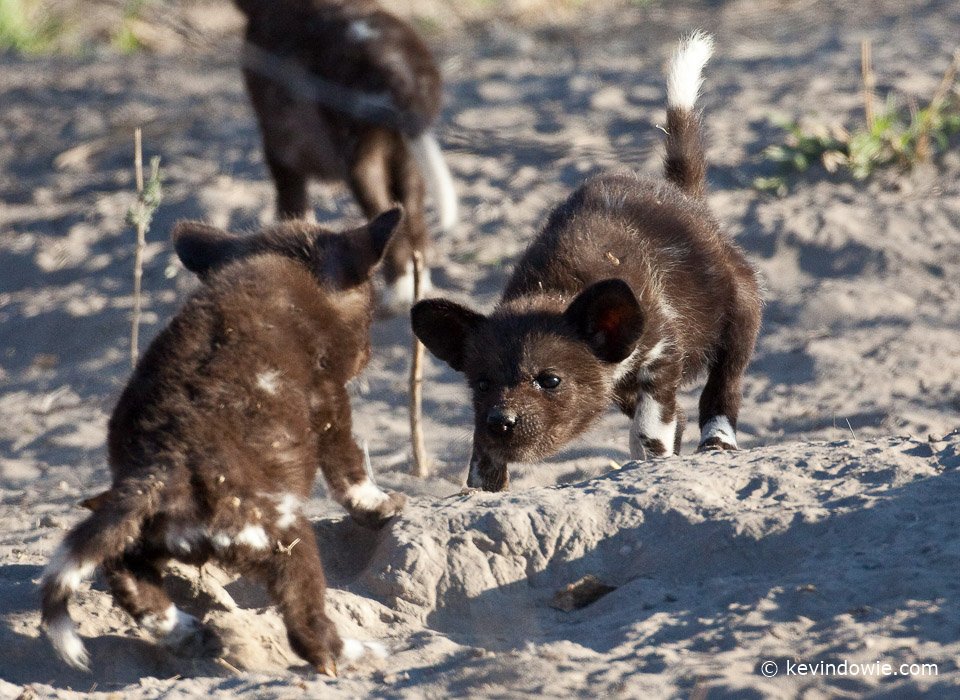
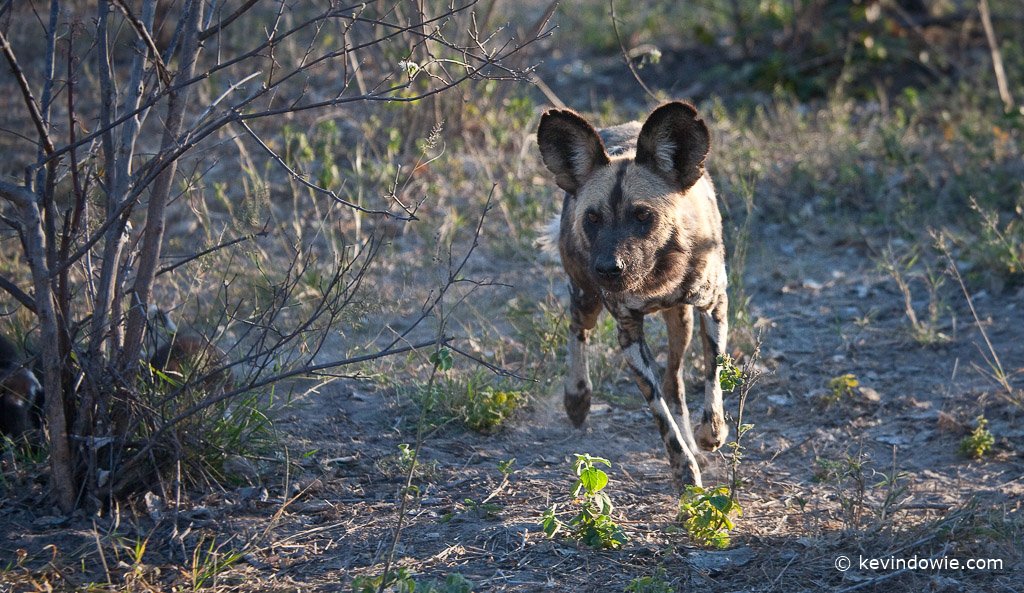
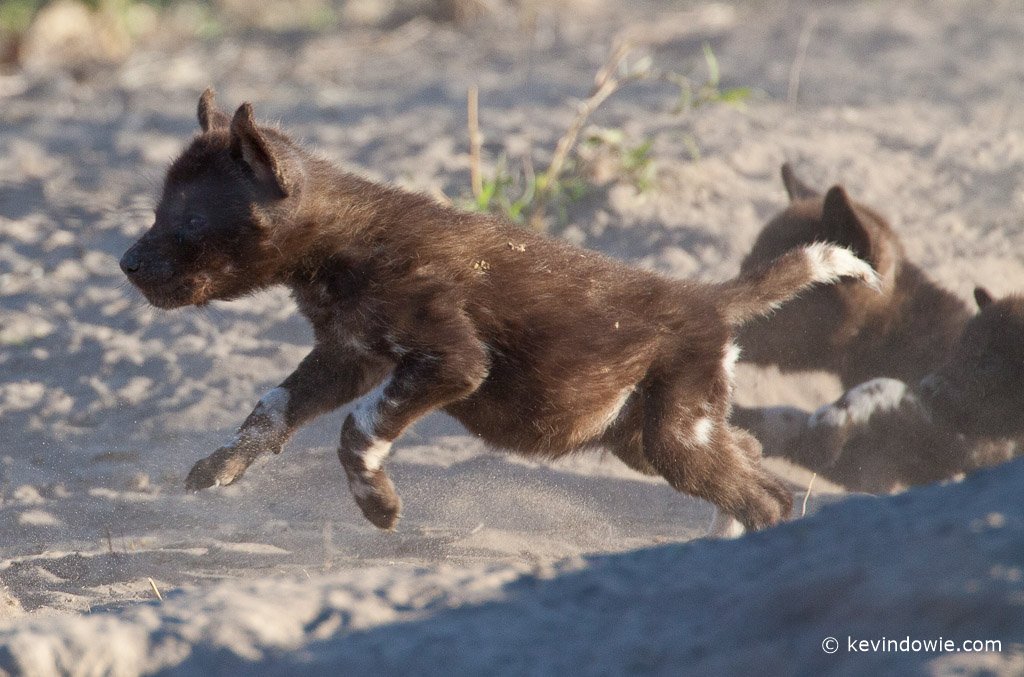
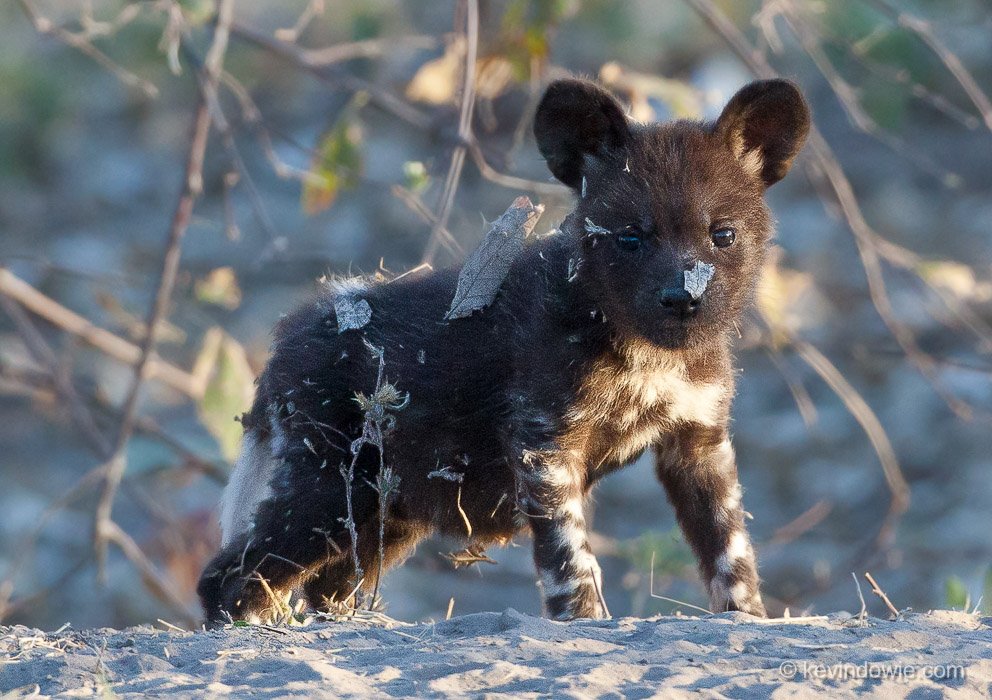
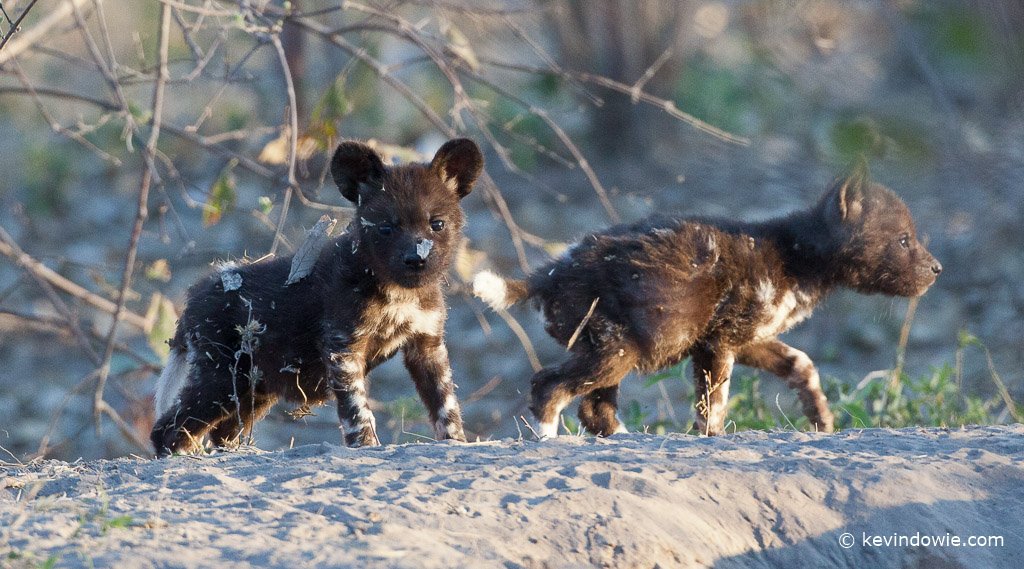
Conservation Status.
The African wild dog is considered to have 5 sub-species and is one of the world’s most endangered mammals. Recent estimates put the total population between 5000 and 6600 with the largest populations being in southern Africa and the southern part of East Africa. Unfortunately, the remaining populations are isolated from each other due to human intervention and the expansion of agriculture.
There are numerous threats to the survival of the species including hunting, both legal and illegal, diseases such as rabies and distemper, and habitat loss for both the dogs and their prey.
The dogs are among the most feared of Africa’s predators with an astonishing 80% success rate when hunting. This success is attributed to the communication and co-ordination that occurs in the pack and the animals’ remarkable stamina. Having identified their prey, the dogs will chase their quarry, sometimes for several kilometres, until it stops from exhaustion.
Suggested further reading:
http://www.worldwildlife.org/species/african-wild-doghttp://www.awf.org/wildlife-conservation/african-wild-dog
